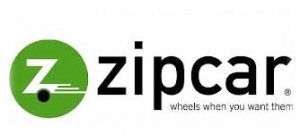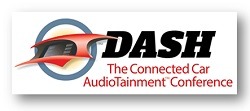Yesterday, we looked at the growing importance of the car to everyone in radio. The dashboard has long been the epicenter of listening – whether it’s the two knob/six preset radio in a 1997 Saturn or the 17” screen in a new Tesla Model S.
And we also know the importance of automotive to radio sales. The most recent report available on the RAB website shows that for the past five years, revenue derived from cars was the top category for radio.
Thus, there’s all this interest in the “center stack” of new vehicles leaving the assembly lines of a fast-recovering automotive industry. As GM’s Greg Ross told a packed room at DASH last fall, just about every car manufactured this year will be connected in some way.
But radio’s future with automotive goes well beyond how they’re equipped, well beyond what Apple and Google decide to do with dashboards, and well beyond your company’s mobile strategy.
The culture of mobility is changing.
One of the stories this winter has been the weather, of course, but its tentacles may be impacting how workers are doing their jobs. The New York Times reports that telecommuting is growing. Their stats show that four official government snow days this year saved Uncle Sam $32 million. A Stanford study with Ctrip (China’s largest travel agency) revealed a $2,000 per employee savings when workers no longer require office space and work out of the house.
Telecommuting is a trend that is growing, and by extension, it is not good for radio. On days when consumers don’t drive to and from work, radio listening tends to drop. Add up all those snow days – official and unofficial – from this past winter, and you have some major challenges for radio (other than News/Talk stations that have become famous for traffic and weather reporting). We also see this during holidays where listening levels tend to drop, reinforcing this phenomenon that the commute is critical to radio listening.
And with this change in mobility, Millennials appear to be more impacted than other generational groups.
 Paul attended the Advance Mobility Project conference in Detroit last month, and saw many indicators that transportation modes are changing. You’ve read about Google’s work on “autonomous driving” (better known as the “driverless car”).
Paul attended the Advance Mobility Project conference in Detroit last month, and saw many indicators that transportation modes are changing. You’ve read about Google’s work on “autonomous driving” (better known as the “driverless car”).
This isn’t just a pipe dream – millions of dollars in research and testing is occurring in cities like Ann Arbor where more than 2,000 cars are linked to a series of sensors and beacons, receiving data that will be used in conjunction with their control functions.
Other companies are working on different methods of transporting people to workplaces – and beyond. Zappos is funding Project 100, a $350 million effort based in Las Vegas. Their vision is to create “a total transportation system” utilizing shared cars, bikes, and bus stops for a monthly fee. The net effect is to eliminate the need to own a car.
 Then there’s Zagster (a bike share program that is focused on micro targets like businesses, colleges, and apartment complexes), and of course Zipcar, now in 26 cities and growing, that allows consumers to use a car only when needed.
Then there’s Zagster (a bike share program that is focused on micro targets like businesses, colleges, and apartment complexes), and of course Zipcar, now in 26 cities and growing, that allows consumers to use a car only when needed.
And even services like RidePal in the San Francisco area operates as a private shuttle service that companies with more than 30 employees can use to transport them to and from work.
Driving and mobility are undergoing an epic change in America. And in the process, entertainment and information consumption will be affected.
All of this represents major challenges to the radio broadcasting industry. But it also offer opportunities as well.
But not in a business as usual “we’re always going to be here” environment.
Several people have asked me in the past few weeks why we’re doing a second DASH conference in Detroit this October in conjunction with Radio Ink and Valerie Shuman from the Connected Vehicle Trade Association.
This is why.
The automotive and mobility paradigms are undergoing rapid change. And broadcasters need to learn, adapt, and grow. Just as retailers from Radio Shack to Best Buy are under fire to change their business models (or close their stores), radio operators will need to rethink everything as their “best friend” – the car and the way the consumers use it and OEMs market it – is at a modern-day tipping point.
 While we support the many radio conferences scheduled this year with our presence and our presentations, we don’t believe there’s a more important conference for radio executives to attend in 2014 than DASH. The automotive challenge is one that impacts every department in every station in America, commercial and public, from programming to sales to digital to management.
While we support the many radio conferences scheduled this year with our presence and our presentations, we don’t believe there’s a more important conference for radio executives to attend in 2014 than DASH. The automotive challenge is one that impacts every department in every station in America, commercial and public, from programming to sales to digital to management.
This year, DASH will expand its focus, provide that 360° perspective that broadcasters need to make intelligent decisions and create smart strategies. This new thinking about mobility, commuting, and its impact on radio will most definitely be on our agenda.
See you in Detroit this fall.
- Media And Technology In 2025: Believe It Or Not! - April 18, 2025
- In Radio, You Just Never Know - April 17, 2025
- The Secret To Making A Great Podcast (And Great Radio) - April 16, 2025




Leave a Reply